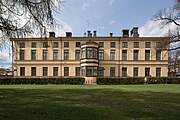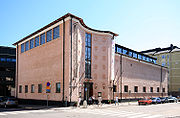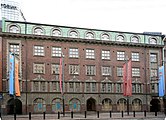ହେଲସିଙ୍କି
ହେଲସିଙ୍କି (/hɛlˈsɪŋki/; Finnish pronunciation: [ˈhelsiŋki] (![]() listen); Swedish: Helsingfors
) ଫିନଲାଣ୍ଡ ଦେଶ ର ରାଜଧାନୀ ଓ ସର୍ବବୃହତ ସହର । ଏହା ଦକ୍ଷିଣ ଫିନଲାଣ୍ଡ ର ଉସିମା ଅଞ୍ଚଳ ରେ ଗଲ୍ଫ ଅଫ ଫିନଲାଣ୍ଡ ତଟ ରେ ଅବସ୍ଥିତ ।
listen); Swedish: Helsingfors
) ଫିନଲାଣ୍ଡ ଦେଶ ର ରାଜଧାନୀ ଓ ସର୍ବବୃହତ ସହର । ଏହା ଦକ୍ଷିଣ ଫିନଲାଣ୍ଡ ର ଉସିମା ଅଞ୍ଚଳ ରେ ଗଲ୍ଫ ଅଫ ଫିନଲାଣ୍ଡ ତଟ ରେ ଅବସ୍ଥିତ ।
ଜନ ଆବାଦୀ
ହେଲସିଙ୍କି ସହର ର ଲୋକସଂଖ୍ୟା 629,512 [୧], ସହରାଞ୍ଚଳ ର ଲୋକ ସଂଖ୍ୟା 1,214,210 [୨]ଏବଂ ସଂଯୁକ୍ତ ମେଟ୍ରୋପଲିଟାନର ଜଣ ସଂଖ୍ୟା 1.4 ମିଲିୟନ ।ଏହା ଫିନଲାଣ୍ଡ ର ସର୍ବାଧିକ ଜନବହୁଳ ମୁନିସିପାଲିଟି ଓ ସହରାଞ୍ଚଳ ।
ଅବସ୍ଥିତି
ହେଲସିଙ୍କି ଦକ୍ଷିଣ ରେ ଏସ୍ତୋନିଆ ର ତାଲିନ୍ନ ଠାରୁ 80 କିଲୋମିଟର , ସ୍ଵିଡେନ ର ଷ୍ଟକହୋମ ଠାରୁ 400 କିଲୋମିଟର ପୂର୍ବ ରେ , ପଶ୍ଚିମ ରେ ରୁସିୟାର ସେଣ୍ଟ ପିତରସବର୍ଗ ଠାରୁ 3888 କିଲୋମିଟର ଦୂର ରେ ଅବସ୍ଥିତ । ଏହି ତିନି ସହର ସହ ହେକ୍ସିଙ୍କି ର ଏଇତିହାସିକ ଭାବରେ ଘନିଶ .ସମ୍ବନ୍ଧ ରହିଛି । .
History
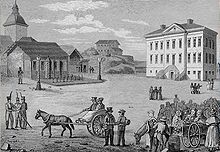

Early history
Helsinki was established as a trading town by King Gustav I of Sweden in 1550 as the town of Helsingfors, which he intended to be a rival to the Hanseatic city of Reval (today known as Tallinn). Little came of the plans as Helsinki remained a tiny town plagued by poverty, wars, and diseases. The plague of 1710 killed the greater part of the inhabitants of Helsinki.[୩] The construction of the naval fortress Sveaborg (In Finnish Viapori, today also Suomenlinna) in the 18th century helped improve Helsinki's status, but it was not until Russia defeated Sweden in the Finnish War and annexed Finland as the autonomous Grand Duchy of Finland in 1809 that the town began to develop into a substantial city. During the war, Russians besieged the Sveaborg fortress, and about one quarter of the town was destroyed in an 1808 fire.[୪]
Geography

Metropolitan area

Climate

Cityscape
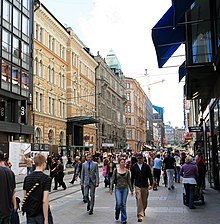

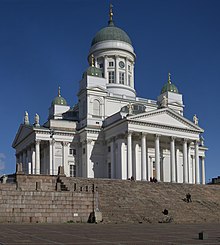

Government

Demographics

Language
| Population by mother tongue[୫] | ||
| Language | Population (2013) | Percentage |
|---|---|---|
| Finnish | 494,627 | 81.9% |
| Swedish | 35,674 | 5.9% |
| Russian | 15,341 | 2.5% |
| Estonian | 10,207 | 1.7% |
| Somali | 7,193 | 1.2% |
| English | 4,879 | 0.8% |
| Arabic | 3,446 | 0.6% |
| Chinese | 2,691 | 0.4% |
| Kurdish | 2,264 | 0.4% |
| Spanish | 2,073 | 0.3% |
| German | 1,665 | 0.3% |
| French | 1,462 | 0.2% |
| Persian | 1,457 | 0.2% |
| Vietnamese | 1,416 | 0.2% |
| Turkish | 1,408 | 0.2% |
| Thai | 1,123 | 0.2% |
| Albanian | 1,005 | 0.2% |
| Other | 15,978 | 2.6% |

Finnish speakers
Swedish speakers
Russian speaker
Speakers of other languages
Economy
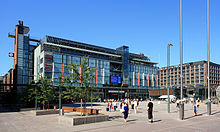
Education



Culture
Museums
The biggest historical museum in Helsinki is the National Museum of Finland, which displays a vast historical collection from prehistoric times to the 21st century. The museum building itself, a national romantic style neomedieval castle, is a tourist attraction. Another major historical museum is the Helsinki City Museum, which introduces visitors to Helsinki's 500-year history. The University of Helsinki also has many significant museums, including the Helsinki University Museum "Arppeanum" and the Finnish Museum of Natural History.
- Museums in Helsinki
-
Classical art museum Ateneum (1887)
-
Kiasma museum of contemporary art (1998)
-
Sinebrychoff Art Museum (1842)
-
The Design Museum (1894)
-
The National Museum of Finland (1910)
-
Tram museum (Ratikkamuseo) (1900)
-
The Military Museum of Finland (1881)
-
Kunsthalle Helsinki art venue (1928)
-
The Finnish Museum of Natural History (1913)
-
Didrichsen Art Museum (1964)
-
Amos Anderson Art Museum (1913)
-
Helsinki University Museum "Arppeanum" (1869)
Theatres

Art

Media
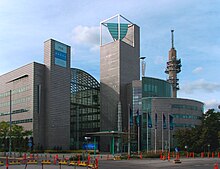
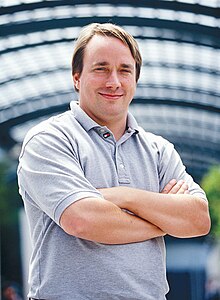
Sports

Transport
Roads

Rail transport and buses


Aviation
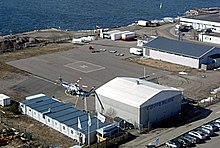
Sea transport


- ↑ "Ennakkoväkiluku sukupuolen mukaan alueittain, maaliskuu.2016" (in Finnish). Statistics Finland. Retrieved 31 March 2016.
{{cite web}}: CS1 maint: unrecognized language (link) - ↑
{{cite web}}: Empty citation (help) - ↑
{{cite web}}: Empty citation (help) - ↑
{{cite web}}: Empty citation (help) - ↑
{{cite web}}: Empty citation (help)



